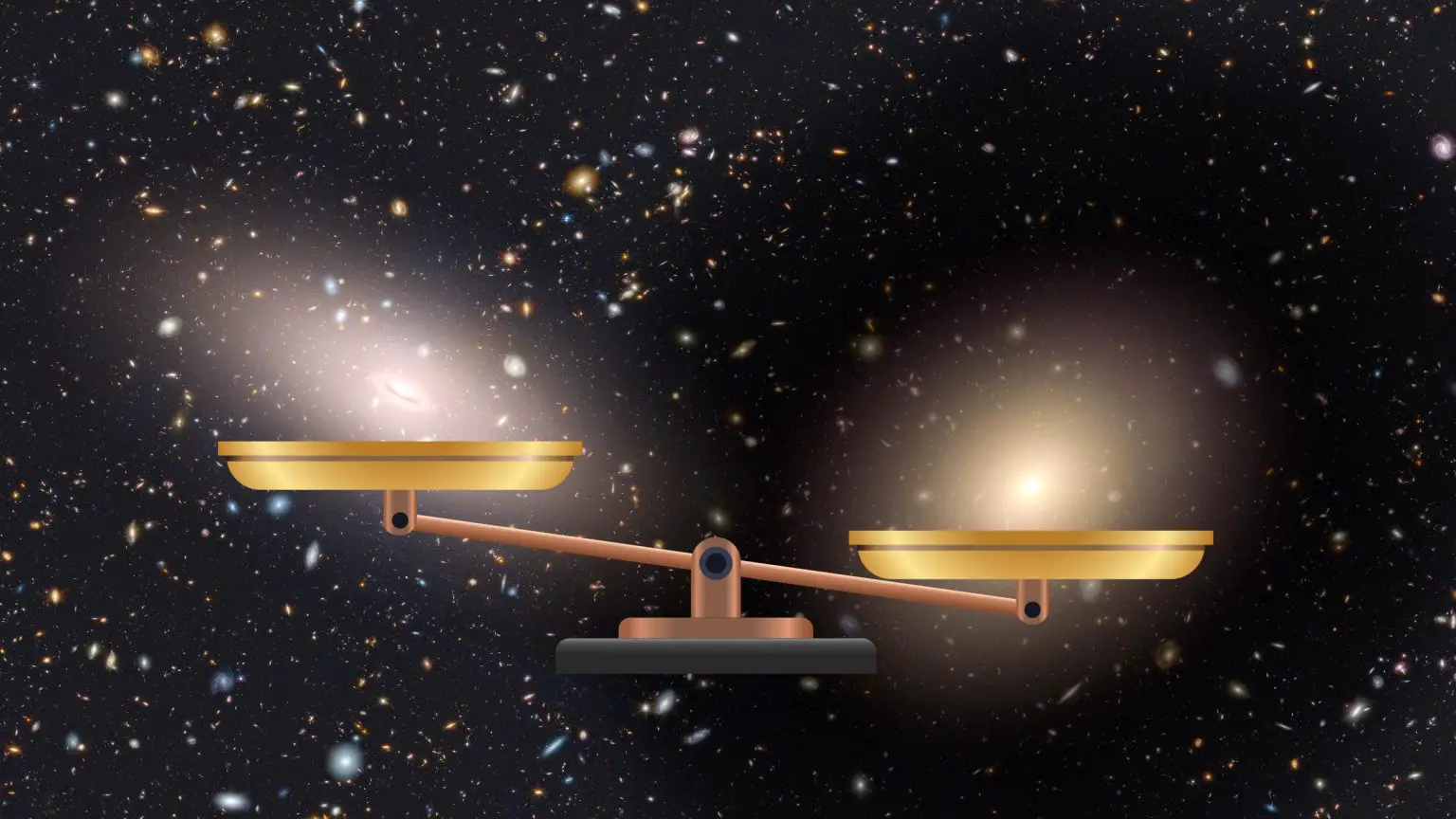There is a massive galaxy with no dark matter. That thing tells us that dark matter is not necessary for galaxy formation. The galaxies without dark matter give hints that dark matter can interact with visible matter in some other ways than just by gravitation. Galaxies with no dark matter tell that. Dark matter is not divided homogeneously around the universe. There are glimpses like dark matter stars.
Researchers search dark matter glimpses by measuring the mass of invisible objects. All gravitational centers are forming material clouds around them. Black holes are visible to us because their material disk's energy level is so high. That means we can see the X-ray and gamma rays. And sometimes telescopes see the material disk around black holes. But if there is no material disk and another mark about the black hole in the glimpse of molecular clouds. That means there is hiding some object. That is invisible but not a black hole.
"Comparison between a conventional galaxy (ESO 325-G004) enveloped in a halo of dark matter, occupying the heaviest plate on the weight scale, and the galaxy NGC 1277 (on the left), in which the study of the mass distribution reveals the absence of dark matter. Credit: Design: Gabriel Pérez Díaz (IAC). Image of NGC 1277: NASA, ESA, and M. Beasley (IAC). Image of ESO 325-G004: NASA, ESA, and The Hubble Heritage Team (STScI/AURA); J. Blakeslee (Washington State University)" (ScitechDaily.com/Cosmic Mystery: A Massive Galaxy Defying Dark Matter Theories)
If there is an object invisible to us. But so light that it cannot be any kind of black hole. That could be a dark matter glimpse. And that thing means that dark matter is more mystic than nobody expected. Or maybe gravitation is forming a rotating disk-shaped structure that just throws dark matter away from the galaxy. Theoretically, dark matter can form similar structures as visible material. Nobody has seen dark matter yet. And that means all things that are written about it is the hypothesis.
There is a theory that during the Big Bang. The energy turned to material in sequences. And in that model, there is a material that energy level is so much higher than visible material that this material cannot interact with visible material in other ways than through gravitation. There is the possibility that those particles are so small that we see only gravitational interaction of that material.
Above:
The image introduces elementary particles and the standard model of physics. The problem is that we don't know all structures that fermions and leptons can make. We know that electrons orbit the atoms or their nucleus. Same way muons and other fermions should orbit the atom's nucleus. But we have no evidence that there are atoms that have electrons replaced by muons. There is more about this topic forward in this text.
But are hypothetical dark matter particles:
An axion is a hypothetical elementary particle originally postulated by the Peccei–Quinn theory in 1977 to resolve the strong CP problem in quantum chromodynamics (QCD). If axions exist and have low mass within a specific range, they are of interest as a possible component of cold dark matter. (Wikipedia/Axion).
The spin and mass of that hypothetical particle is 0. The problem is that an axion cannot have a gravitational effect if its mass is 0. There is the possibility that the spin of the axion is so high that it flows in its quantum field. An extremely fast spin could turn the hypothetical axion into a form that looks like a dumbbell.
In that model energy level of axions is extremely high. That means the axion cannot interact straight with the material because it sends radiation or wave movement that pushes particles or their quantum fields away. And that means the high-energy axion can travel through visible material.
WIMP (Weakly Interacting Massive Particles)
In that model, WIMP is the thing that forms "hot dark matter". The explanation of why WIMP interacts only through gravitation is a mystery. But there is the possibility that the energy level of WIMP makes it impossible that hypothetical WIMP can interact with visible material than through gravitation.
If WIMP is extremely high energy particles. That makes them so small. That interaction between them and other particles is extremely weak. The surface area of radiation that WIMP sends is so small that the interaction between WIMP and visible material is impossible or almost impossible to detect. But can WIMP create similar structures as visible material? That is the big question.
The problem is that we don't know all structures that Fermions can create.
When we think about the form of material, we must understand one thing. Even in visible materials, all particles cannot create stable forms. Bosons are transportation particles of four fundamental interactions. And they cannot form stable particles like baryonic hadrons.
Electrons are the most well-known leptons. But they are not only fermions. Things like muons also are leptons. But there is no observation about atoms where muons replaced electrons. There are six types of leptons. And we can put only electrons in its place. And logically all fermion particles should form shells for atoms like electrons.
Also, fermions are not always form stable structures. Things like muons are not forming stable structures even if they are similar to electrons. So we don't even know all structures that fermions can create.
https://en.wikipedia.org/wiki/Axion
https://en.wikipedia.org/wiki/Muon
https://en.wikipedia.org/wiki/Quantum_chromodynamics
https://en.wikipedia.org/wiki/Strong_CP_problem
https://en.wikipedia.org/wiki/CP_violation
https://en.wikipedia.org/wiki/Weakly_interacting_massive_particle






No comments:
Post a Comment
Note: Only a member of this blog may post a comment.